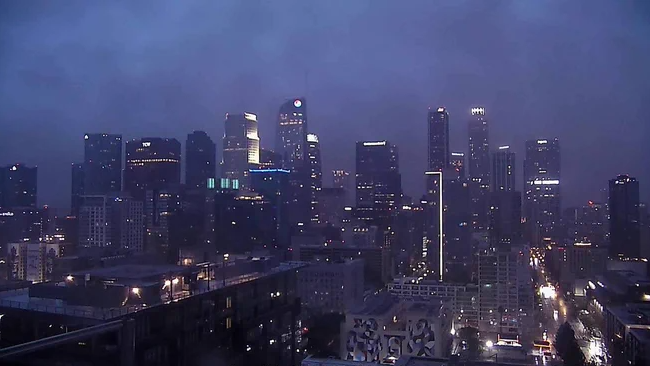While the city of Los Angeles managed to avoid the center of Tropical Storm Hilary, its impacts lead to recovery efforts from flooding, mudslides and downed power lines.
Hurricane Hilary made its way through Southern California as a tropical storm, bringing continuous rain and strong winds with it.
By Sunday morning, the storm’s path shifted slightly east, causing its center to avoid the city of L.A, although much of the southland still felt the storm.
Los Angeles Mayor Karen Bass gave continuous updates throughout the weekend, alerting residents of available city resources as she activated Level 3 of the city’s Emergency Operations Center (EOC). Bass also declared a state of emergency before the storm’s arrival, opening up city resources to immediately respond to issues connected to the storm.
The mayor’s office said it has been working on more than 1,700 calls for pothole repairs, mudflows, and fallen trees and powerlines.
“I want to thank the city family, city employees for working around the clock to get us past this unprecedented weather situation,” Bass said during a Monday press conference. “This was a coordinated collaborative approach and reports thus far indicate that as of right now, there have not been any death or significant risk of injury.”
As of this writing, the Los Angeles Department of Water and Power continues to work to restore power in more than 6,347 homes located around the Hollywood Hills, Hollywood Hills West, Harbor Gateway, West Hills and Brentwood.
As a precaution, the Los Angeles Unified School District postponed classes Monday, but continued normal operations by Tuesday morning.
LAPD said there were no fatal car crashes reported during the storm and as of this writing, there have been no reported storm-related deaths in L.A. County.
While much of Los Angeles County woke up to sunshine Monday morning, the storm continued its path through neighboring San Bernardino County, with rainfall reaching parts of Oregon and Idaho by Tuesday morning.
Hilary formed into a hurricane off the southwest coast of Mexico, evolving into a category 5 hurricane by Saturday night. As its path slowly moved through San Diego and into L.A. County Sunday, it decreased in intensity, becoming a tropical storm as it made its way through the California desert and into parts of Nevada.
Advertising disclosure: We may receive compensation for some of the links in our stories. Thank you for supporting LA Weekly and our advertisers.

